Above is a picture you won’t see too often: Uneaten Gopher Apples.
Woodland creatures relish these fragile, sweet fruit. So efficient are the denizens of the forest — particularly Gopher turtles — I rummaged around Florida about a decade or so before I actually saw a Gopher Apple plant with fruit on it. My track record since then is a bit better but not much. You have to know where they grow and watch for them almost daily as they come into season. Gopher Apples do not travel well. They are weak on the vine and mash up in a pocket easily. Opinions on their texture and flavor vary greatly. They are definitely fruiting now. To read more about them click here.
Getting High: When it comes to plants, elevation makes a difference. I spent a good part of August traipsing around the Blue Ridge Mountains of western North Carolina and Eastern Tennessee, a busman’s holiday as it were and why its been a fortnight since a newsletter. My base elevation was around 3,700 feet and on one hike got up to about 6,200 feet. Amazing plant things happen when you get high.
Fresh from the airport I was invited to some live music and wine at Grandfather Mountain Winery. Steve Tatum, the owner, wanted to show me some weeds that were bothering him in his vineyard. The first weed I spotted was chickweed. It was perky, fresh, perfectly right for picking. At lower elevations it is a short-lived spring time plant. Here in Florida it flourishes between Christmas and St. Patrick’s day. At 3,700 feet it was happily in season. The second weed, one that gave Steve a lot of problems he said, was purslane, which some call the most nutritious green on earth. And he did have a lot of it and which could take goodness away from the grapes he grows. Of course the solution is simple, eat the weeds. In fact it was healthy enough and the grapes above it so well-cared for Steve might open a purslane market. I also noticed the owner had a good crop of of Japanese Knotweed in fall flower ( a good source of resveratrol.) Nearby was a walnut tree and an inedible Buckeye (though some old timers– of which I am fast becoming — say the natives processed the nuts and made them edible. I have no idea how.) By the way, the winery’s zinfandel was wonderful.
Unlike in Florida there were sassafras trees everywhere. Locally they are sporadic, spindly and hard to find. Various species of hickory were also fruiting (though it should be said Hickories, Pecans, and Walnuts are all in the same genus.) I also managed to see a planted Beech Tree and a fruiting Kousa Dogwood. As you might guess by this week’s new front pages Sourwood was in blossom, the dangerous Yew was fruiting, and Mountain Ash, the Rowan Tree of Henry Potter fame, was brilliant. On top of Roan Mountain at some 6,108 feet Sheeps’ Sorrel was just getting going. It’s usually a late spring or early summer plant except here in Flatland Florida where it shows up in the winter time. Curdy dock was seeding as were Plantago majors or Plantains, perhaps the only two species I saw right on schedule other than apples. Many wild (or neglected) apple trees — red and green — were ready for picking and I ate many on the trail, along with blackberries though I am not sure which exact species of blackberry they were. On the mountain tops blueberries had just gone out of season as had the strawberries. Partridgeberry was underfoot, interesting, edible, but not full of flavor.
A few mysteries were encountered along the way including mountain mushrooms. Saw a delightful yellow Ornate Stalk Bolete — too bad it is too bitter to eat. Ever present were the deadly Amanitas. Some shrubs that caught my attention need to be identified. On one pastured part of the Appalachian Trail — where we encountered a curious young bull — there were more than enough thistles to keep one alive for a long time and a curious low-growing fruiting bush. I think I have managed to identify it, Berberis thunbergii, or the Japanese Barberry. Oddly it is listed as only growing in that particular county in that area. It was fruiting heavily. Other species of barberry are edible but this one is a mystery. Even an expert on this plant that I contacted couldn’t say if it was edible or not. That raises the question of how can one be an expert on a particular species and not know if it is edible or not? The answer might be is that for most PhD’s in botany edibility simply is not an element of their profession. I’ve been meaning to write about barberries for some time but I would like to sort out this species first.
Here in Florida we are under siege by yams, specifically the Dioscorea bulbifera, a famine food if that. Less abundant but can be found is Dioscorea alata, very esteemed, probably our best caloric staple. There are also, if my memory is working, eight native yams. But, they do not produce air-storage organs (air potatoes) and generally are not considered edible (they have a lot of powerful steroids and hormones in them. It is from one of them the original birth control pills were made.) A yam one doesn’t see here except under cultivation is the Chinese Yam, Dioscorea polystachya, a yam of a thousand names and one that tolerates cold weather. On a hike to Laurel Falls in eastern Tennessee it caught my eye. It is a little unusual in that not only does it grow where winters are cool the “air potatoes” are as choice a food as are its roots. Each vine will produce about 20 bulbils a season so it would take quite a few to provide food if you only ate the bulbils but as mentioned the large root is edible as well.It’s become invasive from western Carolina into Tennessee, Kentucky and as far north as southern Ohio. That also means it is a good source of wild food and a caloric staple. To read more about the Chinese Yam click here.
And now a bit of a challenge for my readers. In Avery County, North Carolina, we came upon several patches of blackberries which are closely related to Dewberries. Along one part of the trail however a new species was in fruit. Small, very sweet, low growing, almost feathery leaves. Can you figure out which species it is?
I DIDN’T KNOW THAT: A bicycle with no pedals, intentionally. Invented in Germany. Says the designer, “The prior aim of developing FLIZ was to bring a completely new driving experience to everyone. Based on the very first bike – the ‘Laufrad’ — we created a velocipede concept of healthy, ecological mobility in overcrowded urban space. Its laminated, innovative frame with 5-point belt system provides a comfortable, ergonomic ride between running and biking. The frame integrates the rider and due to its construction it works both like a suspension and like a top carrier whereas the belt replaces the saddle and adjusts your position.” Brings new meaning to the phrase “hanging around.” Here’s their website: FLIZ
TOMORROW’S NEWS TODAY: Expect to see research on humans catching feline disease. It’s a newly minted epidemic in England and sure to spread as it’s also a new way for researchers to get grants. Researchers tend to find what they are looking for — even if they don’t find it — because that pays for more research. Expect more warnings about cats for pets perhaps even a ban on the pets in any house with children, the sick or elderly. The culprit is the prevalence of Toxoplasma gondii in the food chain. It’s a parasite that gets on grass grazing meat animals eat and onto vegetables through the soil. It is wise not to collect any wild food near carnivore bathrooms. A 2001 study showed direct contact with pets was not the most common means of contracting the disease. Infected meat was. While no where near as dire as Mad Cow Disease it is the next thing medicos will be wringing their hands about and asking for budget increases to combat. In humans Toxoplasmosis can cause no symptoms to, in rare cases schizophrenia. Some day you may be able to say in court “my cat made me do it.”
To donate to the Green Deane Newsletter click here.

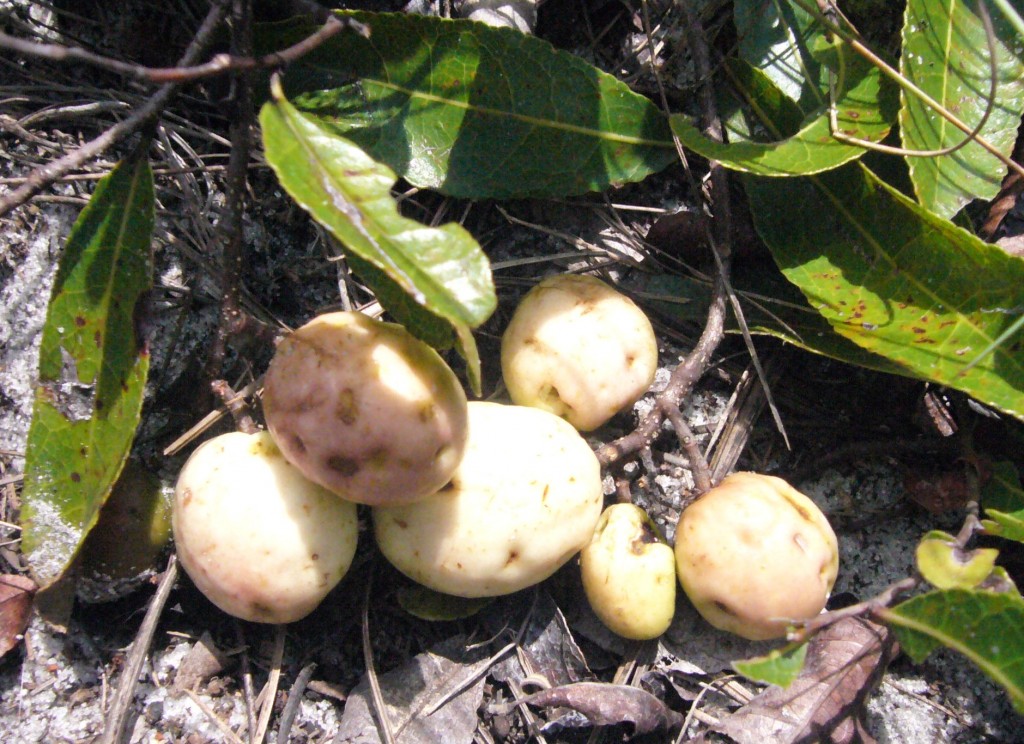
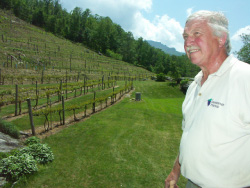
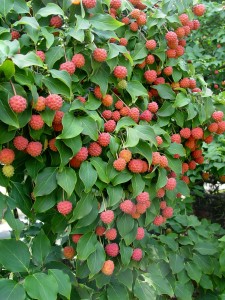
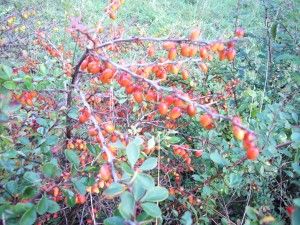
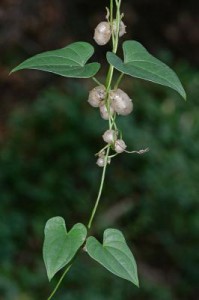
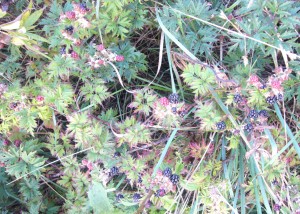



It seems the last time mankind went after cats the plague broke out in Europe.
The blackberry is Rubus laciniatus, I believe…
Dear Dean,
Can I eat Fringed Fanpetal flowers? (Sida ciliaris L.) Leaves and stems?
I love to read your edible newsletter down here in Key West Zone 11b.
Robin
I know of only one Sida that is reported as edible, S. rhombifolia.
Explain this sentence, please:
“In humans Toxoplasmosis can cause no symptoms to, in rare cases schizophrenia.”
is that *too*, or does it mean it can cause *anything between* no (zero) symptoms to, in rare cases, schizophrenia” ?
What I was trying to say is there is a wide range of symptoms. Most of the people who get it never know they got it. As for Wikipedia, it is the only website that cannot be referenced here. The reason is that Wikipedia is so inaccurate the legal decision was made to exclude it to reduce liability.
Thanks Green Deane 🙂
I agree with Roy.
There is NOTHING that could make me give up my kitties. I do hear handwashing helps. 😉
Ruth
I so enjoy reading all about your travels and the plants you encounter, I kinda pride myself on identifying the plants i see and if i don’t know what they are it perplexes me until i find out what they are. I am a native of Fla. and i have never seen or heard of the Gopher Apples, the leaves almost look like Bay or something similar to that. And the black berries sure make me hungry for some wild berries i used to pick out in the woods, maybe it will be a wet spring and we will get some good berries next year. When i was a little girl i would go berry picking with my mother and for many years after i had grown up i went every spring until civilization or urban sprawl had taken all of my patches away .
Yes, that is Rubus laciniatus, Evergreen Blackberry (native to Europe). Also found fruiting in the Pacific Northwest earlier last month.